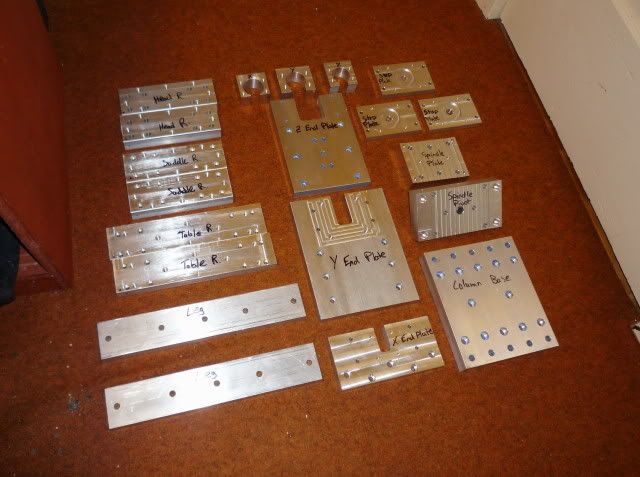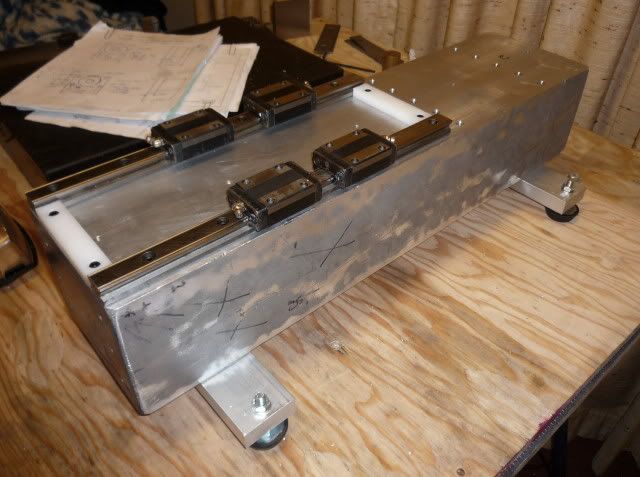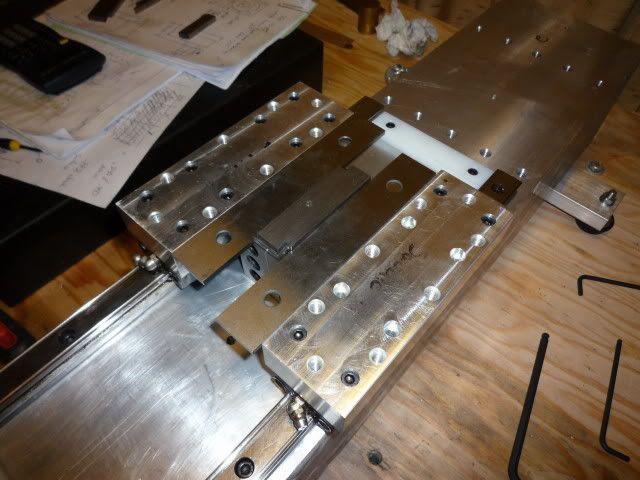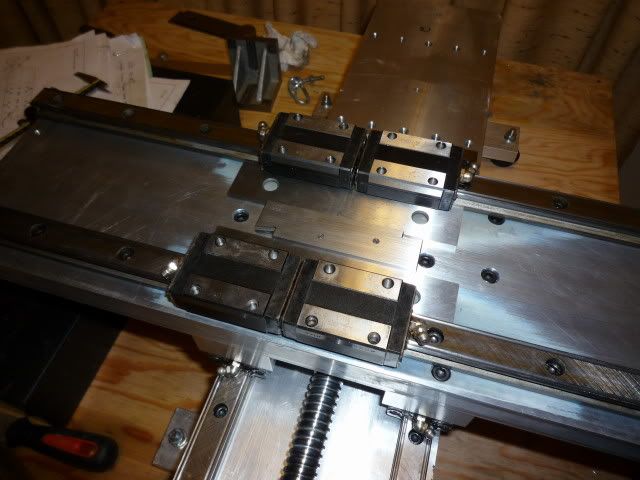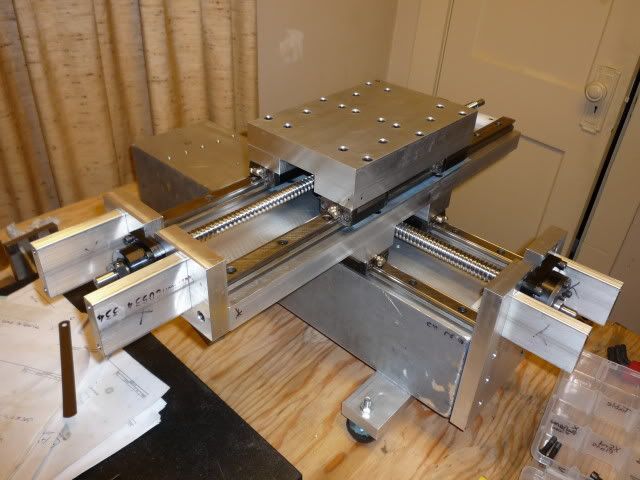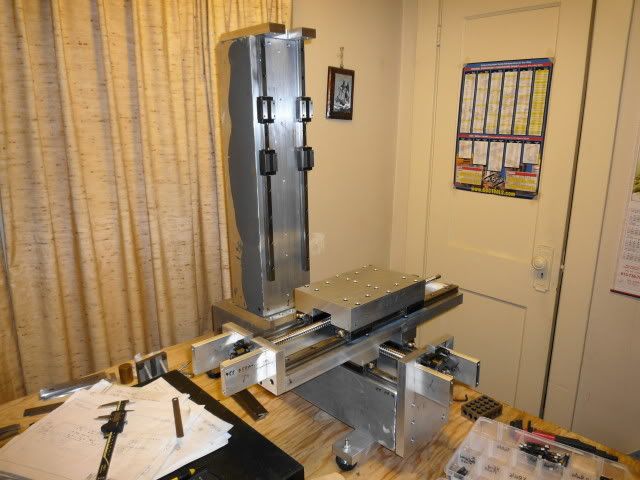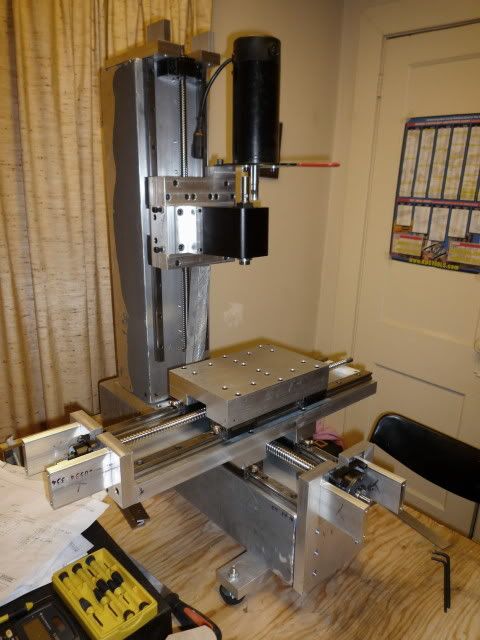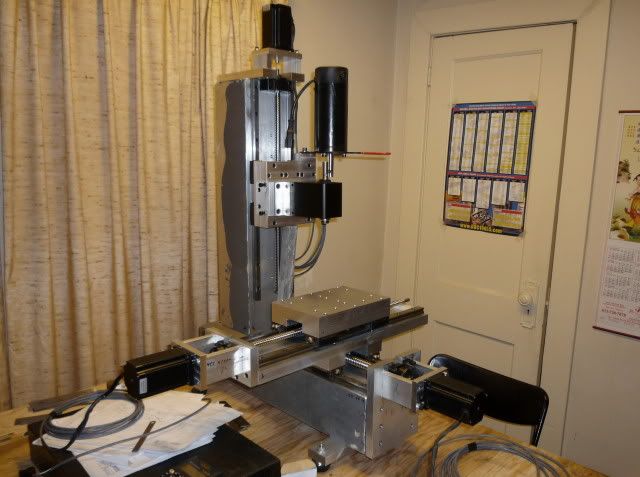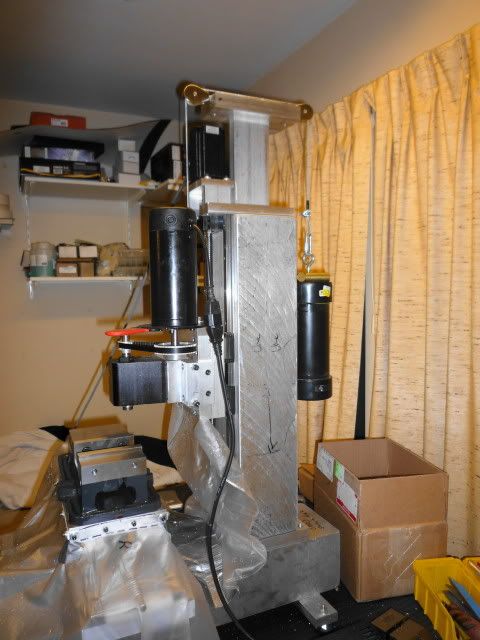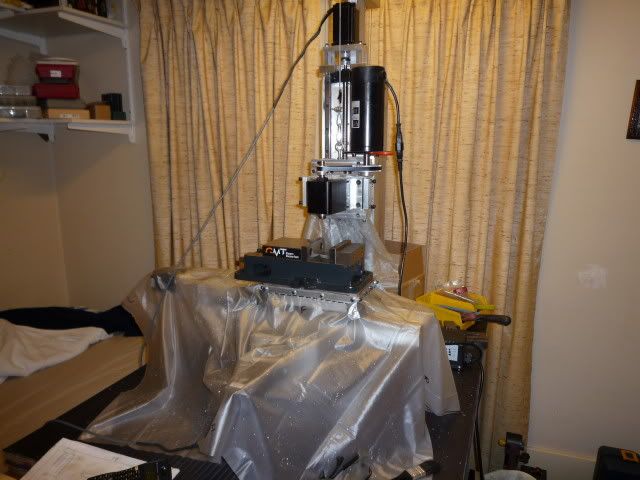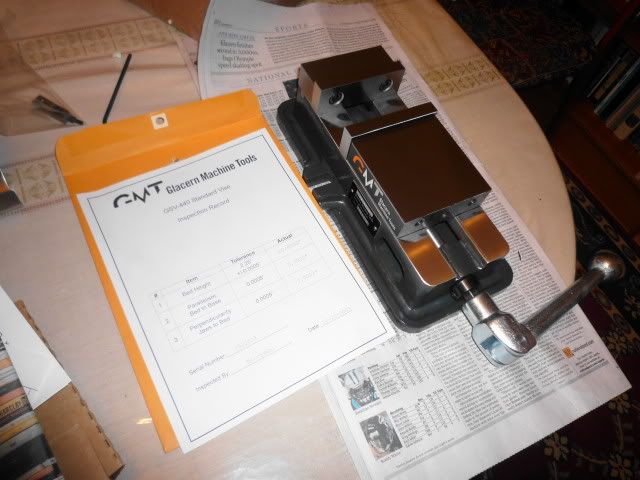After receiving and checking over the X2 head from LMS, it didn't exactly blow my skirt up. Eight tenths of run out in the taper. Add in a Tormach collet, holder and the total runout could be terrible depending on how it stacked. Even though I had bought the belt drive conversion kit as well I decided to cut my losses instead of buying a bearing puller kit and new bearings.
Finley spindles were looked at. The price was too high ($1200) and it was a cartridge and would need an accurately bored mounting block. Plus it was ER20 so any kind of repeatable tool changes were out of the question.
So, I checked out the Sherline industrial spindles. They had one with what appeared to be a much beefier case than the stock one. I new the shaft and bearing set were the same. But to me, the weakness in the Sherline spindles on the factory machines was in the mounting and the thin case. If a beefier one could be mounted solidly, I figured it would work quite well.
http://www.sherlineipd.com/spindles.htm
P/N 6502-3/4-16/#1 Morse spindle with 2-step "V" belt pulley
Here is a pic comparing a spindle off a Sherline mill/lathe to the industrial one. Quite a difference.






 Reply with Quote
Reply with Quote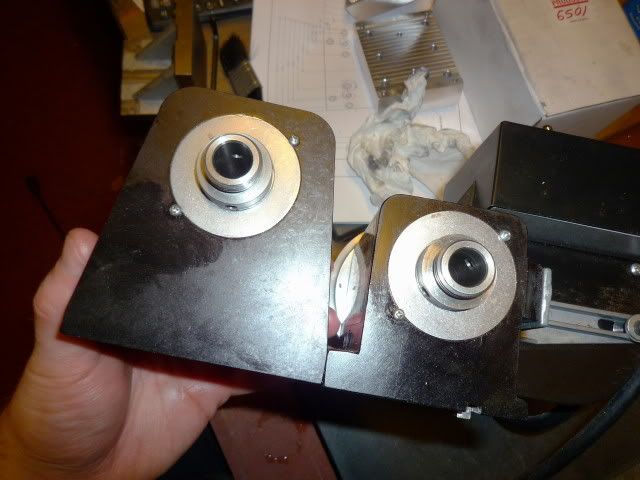
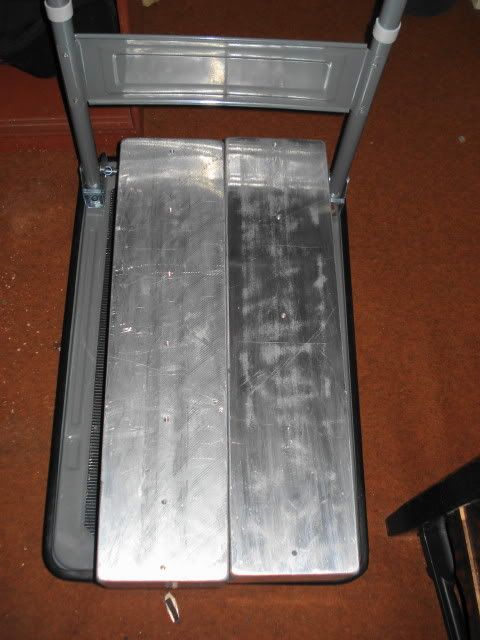

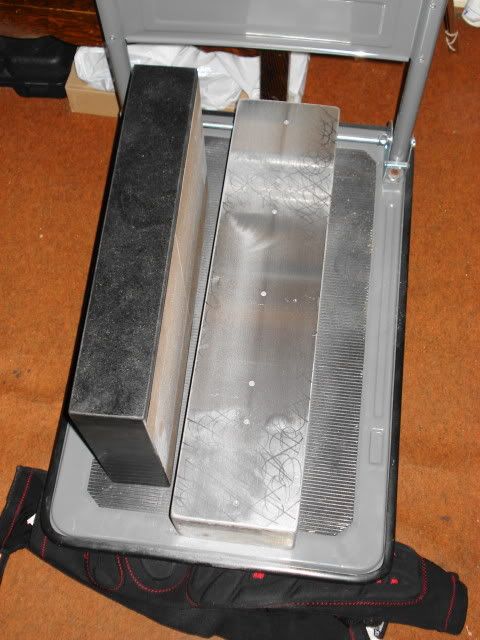
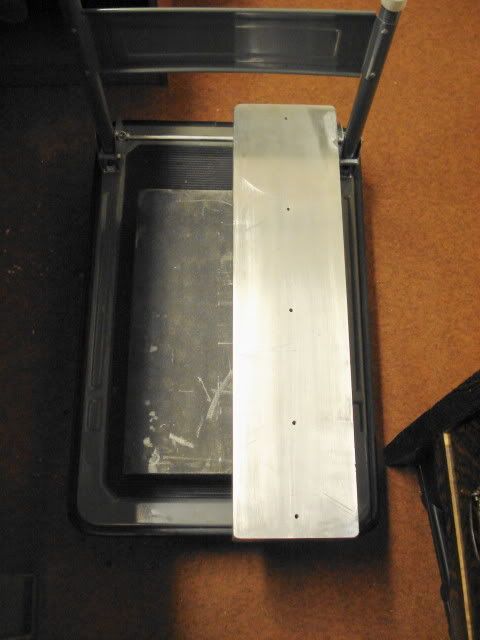
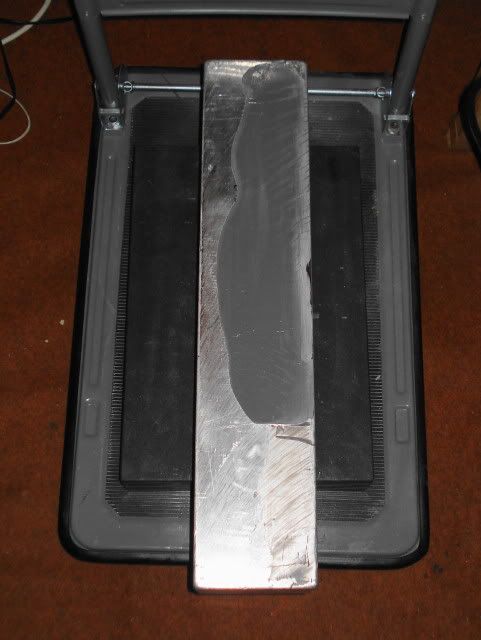
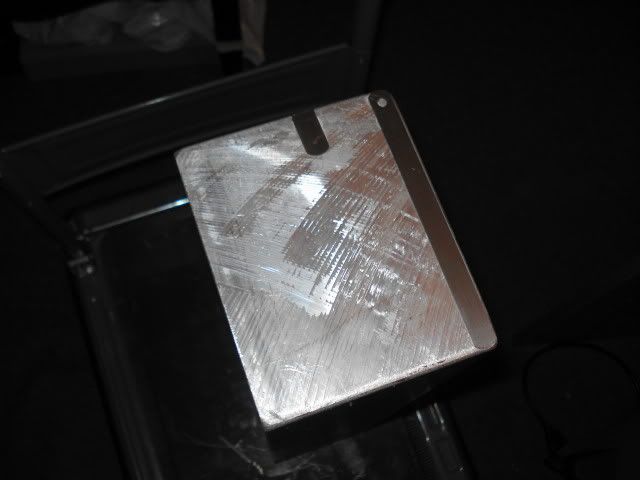
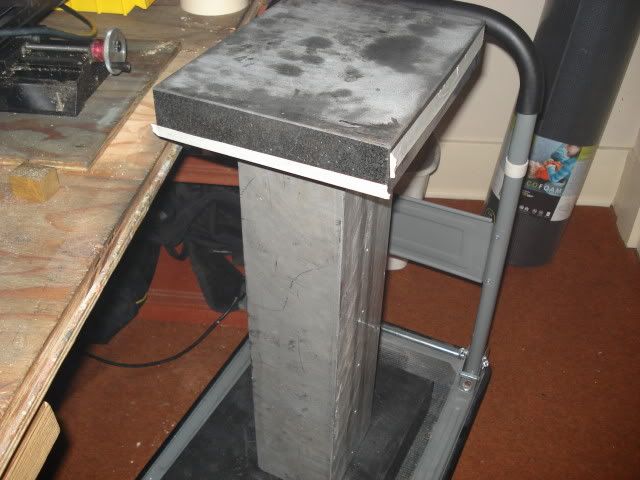
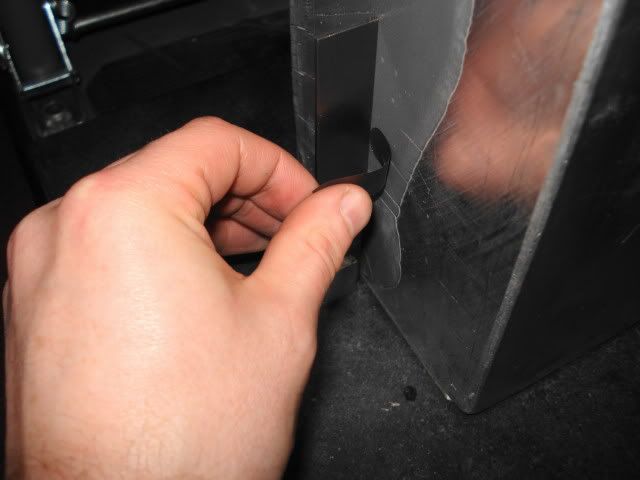
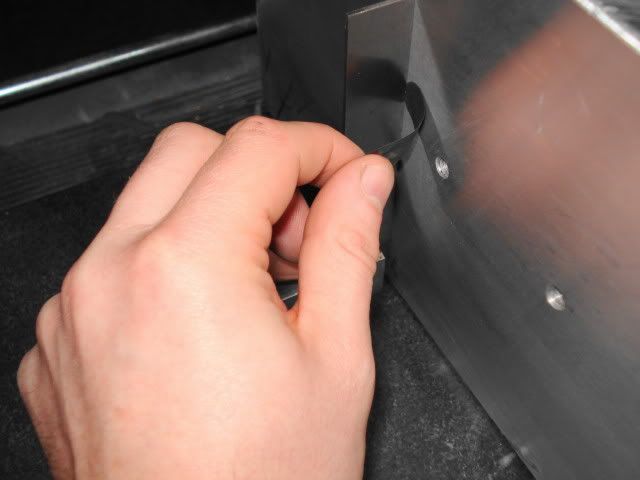
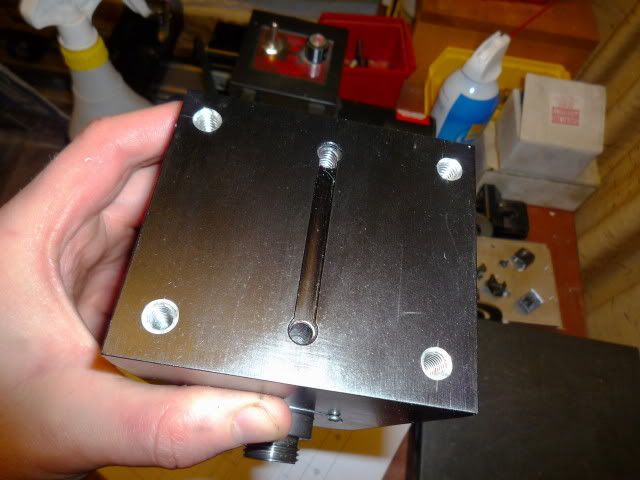

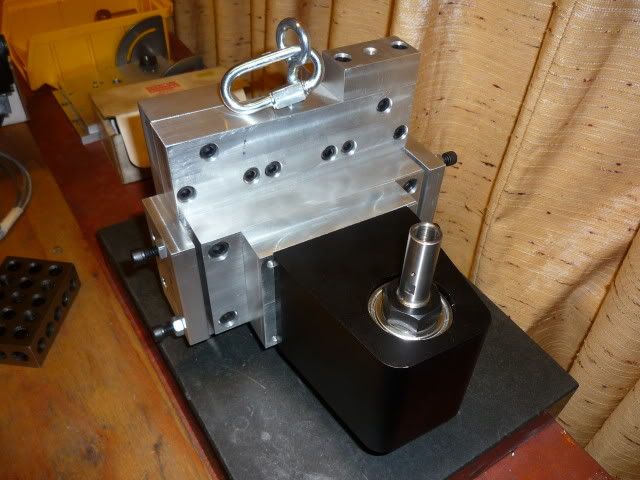
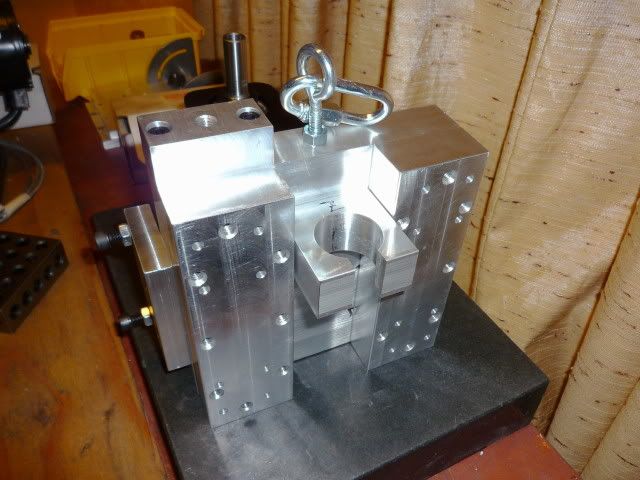


 ? You have a bigger pair than I do.
? You have a bigger pair than I do.